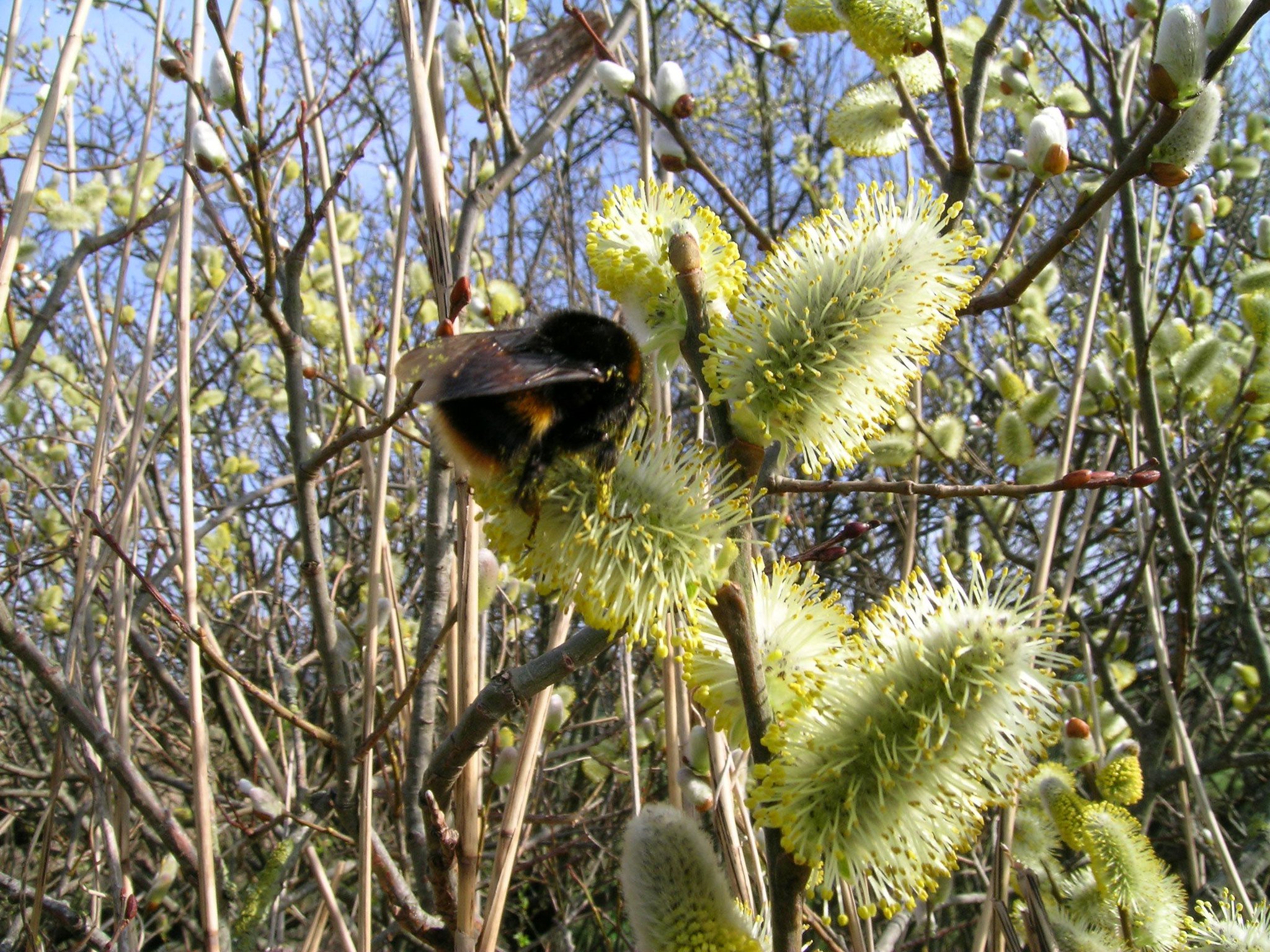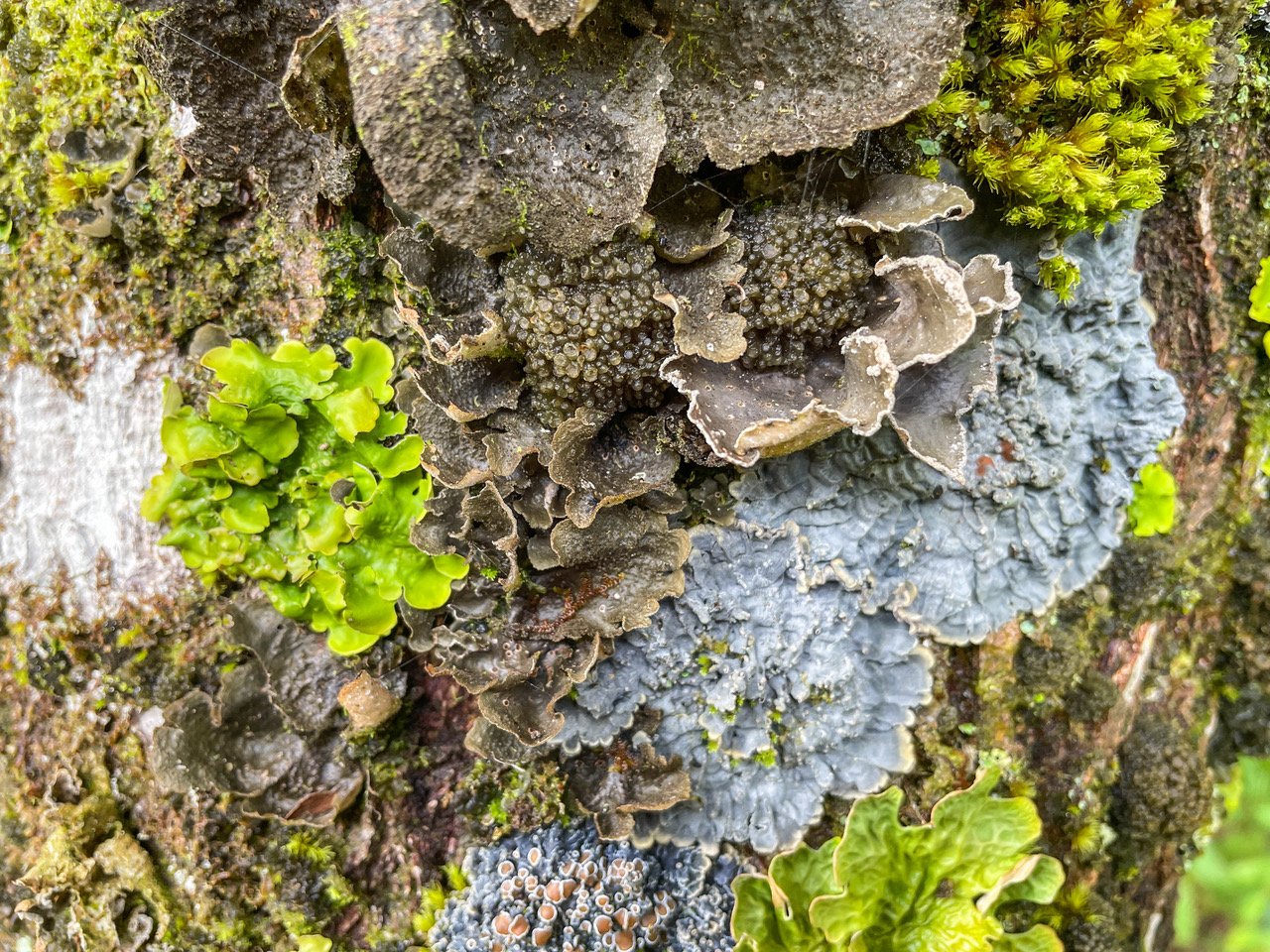The goat willow: champion tree of the wetlands
The goat willow (Salix caprea), also known as pussy willow, is one of several willow species that grow in the UK, and it’s probably the one you’re most likely to see in Scotland’s rainforest.
All rainforest trees thrive in the rain, but willows are one of the few trees that tolerate very wet soils. In fact, you may spot them next to rivers or streams, where their roots can actually serve a vital function helping to stabilise the bank and prevent erosion. You’ll also see goat willows on steep slopes, where other trees would struggle to survive.
Goat willows can live for hundreds of years, so while they’re often thought of as being small and shrubby, they can also grow into huge veteran trees that play a vital role for all sorts of wildlife.
How to identify a goat willow tree
The easiest time to identify goat willows is in the spring: look out for their fabled catkins, which are fuzzy and said to look like cats paws (hence the name pussy willow).
The leaves of goat willows are very different from weeping willows or white willows, which are long and thin. Instead, goat willow leaves look more like a smoothed-off hazel leaf, and the tips often have a characteristic bend over to one side.
However, all willow trees have a tendency to hybridise, so that can make them tricky to identify! When they’re covered with lichens, it’s also hard to see the bark.
Goat willows and people
Willow is traditionally used in basket weaving, but goat willow is too brittle for this. But, it has been used historically for making wattle, for the construction of buildings, and also for making charcoal, dyes, rope, and in herbal remedies.
The Gaelic word for willow is seileach and the Scots word is saugh, both of which show up in place names. In fact, Sauchiehall Street in Glasgow means something like ‘flooded meadow of the willows’, which is why Charles Rennie Mackintosh called his cafe The Willow Tea Rooms.
Goat willows and wildlife
Goat willows are a champion of pollinators. They flower very early in the season thus providing pollen and nectar at a time when other plants are still waking up after winter. They also host many different species of caterpillars, which then become food for other insects and birds.
But in Scotland’s rainforest, they’re particularly important as a host for lichens.
In this striking picture of a goat willow from Laura Corbe, there are three different Sticta lichens, Atlantic felt lichen, red-eyed shingle lichen, octopus suckers, tree lungwort, and frilly-fruited jelly-skin (at least, there are more species here!)
This goat willow is likely to be such a good host for lichens due to its age, and the characteristics of its bark. As the tree ages, the bark becomes more alkaline, and many lichens prefer to grow in an alkaline environment. In fact, goat willow is one of the most alkaline barks of any rainforest tree. Its bark also cracks open providing lots of microhabitats and fissures for the lichens to lodge in and grow.




